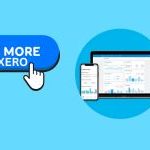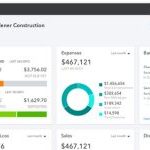Running a business involves keeping a close eye on your finances, and one of the most crucial tools for this is the Profit and Loss (PL) Statement. This document gives you a snapshot of your company’s financial health, showing you how much profit you’re making after all expenses are deducted from your revenue. Let’s break down how to view, read, write, and improve your PL statement in simple steps
KEY TAKEAWAYS
- A Vital Financial Statement: A Profit and Loss (PL) Statement, also known as an income statement, is crucial for understanding a company’s financial performance over a specific accounting period.
- Focus on Financial Elements: The PL statement highlights the company’s revenue, expenses, and profit, providing a clear picture of its financial health.
- Operational Insights: By analyzing the PL statement, businesses can gain valuable insights into their operations, efficiency, and areas needing improvement, helping them make informed financial decisions.

What is a Profit and Loss Statement?
A Profit and Loss Statement, also known as an income statement, summarizes the revenues, costs, and expenses incurred during a specific period, usually a fiscal quarter or year. It’s a key financial statement that provides insights into your company’s ability to generate profit by increasing revenue, reducing costs, or both.
Elements of the Profit and Loss Statement (PL)
The income statement consists of three components:
Revenue: This is the total income generated from the sale of goods or services. It answers the question ‘How much money did you make?’
Expenses: These are the costs incurred in the process of earning revenue, including cost of goods sold (COGS), operating expenses, and non-operating expenses. It answers the question “How much of the amount earned was spent?”
Profit: Also known as net income, this is what’s left after all expenses have been deducted from the revenue. It answers the question: “How much profit was made (revenue – expenses)?”
How to View Your Profit and Loss Statement
Accessing your PL statement is the first step. Many businesses use accounting software like QuickBooks, Xero, or FreshBooks to generate their PL statements. These tools can automate the process, pulling in data from your transactions to give you a real-time view of your finances.

How to Read Your Profit and Loss Statement
Understanding the numbers on your PL statement is crucial. Here’s a quick guide to interpreting some common terms:
- Gross Revenue: The total revenue before any expenses are deducted.
- Net Revenue: Revenue after returns, allowances, and discounts have been deducted.
- Gross Profit: Revenue minus the cost of goods sold. This shows how efficiently your business is producing its goods or services.
- Operating Expenses: Costs that are not directly tied to production, such as rent, utilities, and salaries.
- Net Profit: Also known as net income, this is the actual profit after all expenses, including taxes and interest, have been deducted.
How to read revenue
Revenue is the source of a company’s earnings. It is divided into three categories: “Operating revenue,” “Non-operating revenue,” and “Other revenue”
| Classification | overview | Main Accounts |
| Operating revenue | Revenues obtained through principal business activities | Sales, accounts receivable, etc. |
| Non-operating revenue | Revenues obtained through activities other than the principal business activities | Interest received, dividends received, etc. |
| Other revenue | Income acquired for temporary reasons that do not fall under the other two categories | Gains on sales of fixed assets, gains on sales of investment securities, etc. |
How to read costs
Expenses are things that a company uses to generate revenue. There are the following types:
| Classification | overview | Main Accounts |
| Cost of sales | Costs incurred in purchasing and manufacturing products that correspond to sales | Purchase amount, purchase price discount, etc. |
| Selling, general and administrative expenses | Among the main business activities, sales activities and management | Salaries, advertising expenses, packing and shipping charges, travel expenses, utility expenses, insurance premiums, depreciation expenses, etc. |
| Non-operating expenses | Activities other than the main business activities | Interest paid, etc. |
| Extraordinary losses | Expenses incurred due to temporary reasons that do not fall into any other category | Loss on sales of fixed assets, etc. |
| Income Taxes | Tax on corporate income | Corporate tax, resident tax, business tax, etc. |
How to read profit
Profit is the profit a company makes after subtracting expenses from revenue. There are five types of profit as shown in the table below. Each profit is calculated using a formula. Let’s understand in more detail how to calculate and think about each profit.
| Classification | Overview | Formula |
| Gross Profit | Profit from sales minus the corresponding cost of sales | Sales – Cost of sales |
| Operating income | Gross profit minus selling, general and administrative expenses | Gross profit – selling, general and administrative expenses |
| Ordinary Profit | Operating profit minus revenues and expenses incurred from activities other than operating activities | Operating profit + non-operating income – non-operating expenses |
| Pretax profit | Ordinary profit minus extraordinary profits and losses incurred on a temporary basis | Ordinary profit + extraordinary profit – extraordinary loss |
| net income | Net income before taxes minus corporate tax, resident tax, and business tax | Pretax profit – Corporate tax etc. |
Writing a Profit and Loss Statement
Creating your own PL statement involves a few straightforward steps:
- Gather Financial Data: Collect all your revenue and expense records for the period you want to analyze.
- Categorize Expenses: Group expenses into categories such as COGS, operating expenses, and non-operating expenses.
- Calculate Totals: Add up the totals for each category.
- Subtract Expenses from Revenue: This will give you your net profit.
Improving Your Profit and Loss Statement
To improve your PL statement, focus on two main areas: increasing revenue and reducing expenses. Here are some strategies:
- Increase Revenue:
- Upsell or cross-sell to existing customers.
- Explore new markets or customer segments.
- Adjust pricing strategies.
- Reduce Expenses:
- Negotiate better terms with suppliers.
- Optimize operational efficiencies.
- Implement cost-saving technologies.
Conclusion
A Profit and Loss Statement is more than just a financial report; it’s a tool for making informed business decisions. By learning how to view, read, write, and improve your PL statement, you can gain valuable insights into your business’s financial health and take steps to enhance its profitability. Remember, the key to financial success is not just in generating revenue but also in managing expenses effectively. Start applying these simple steps today and watch your business thrive!










